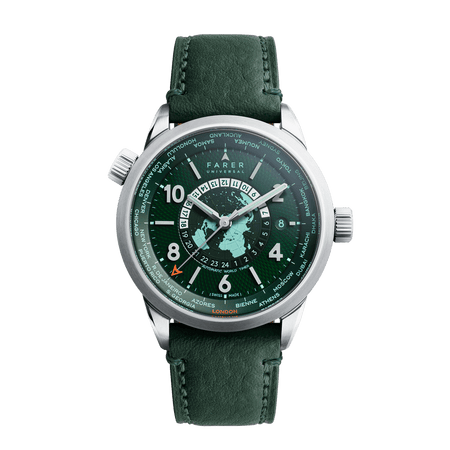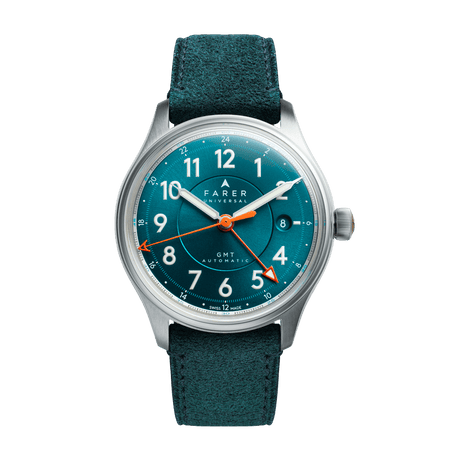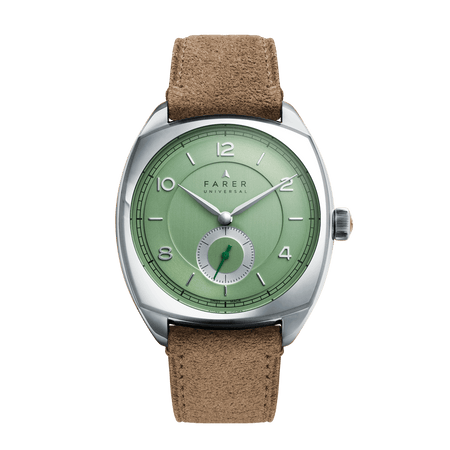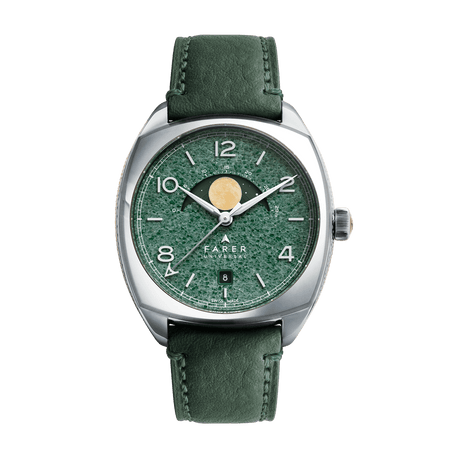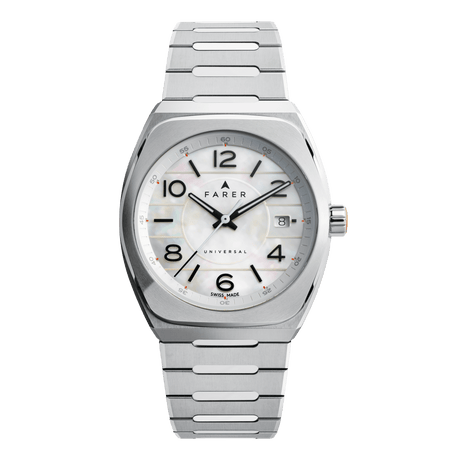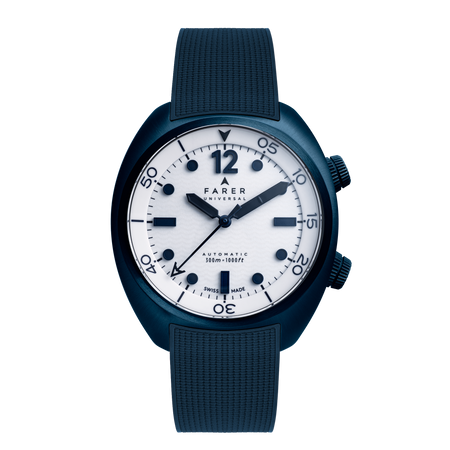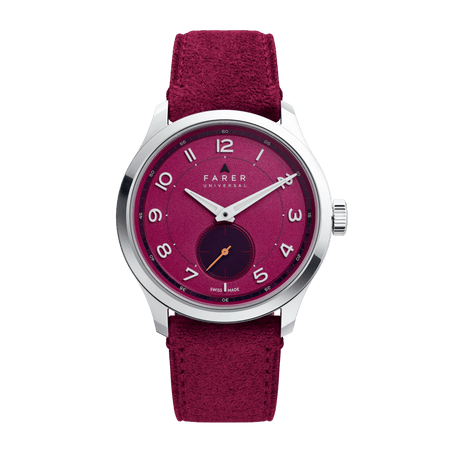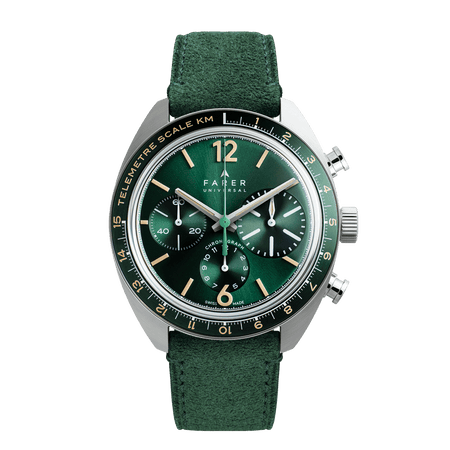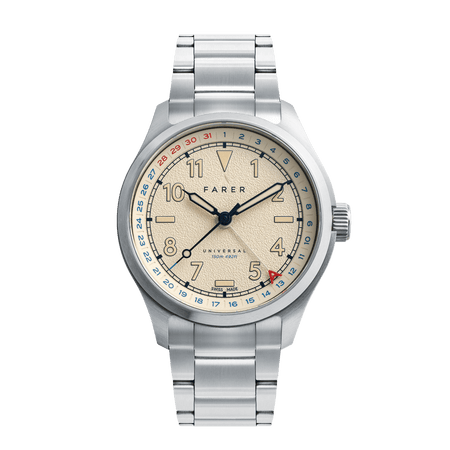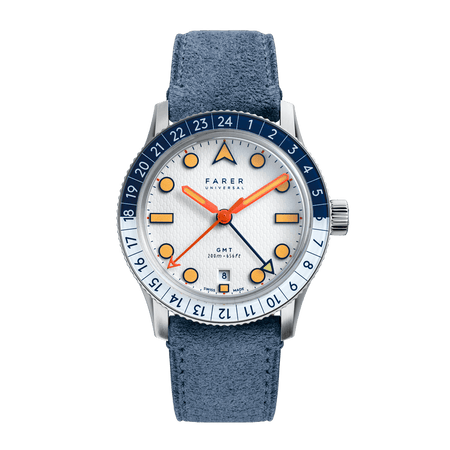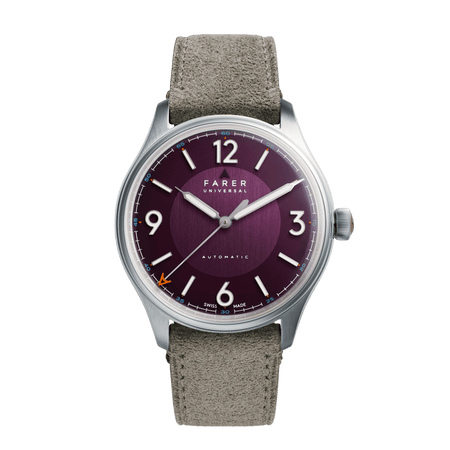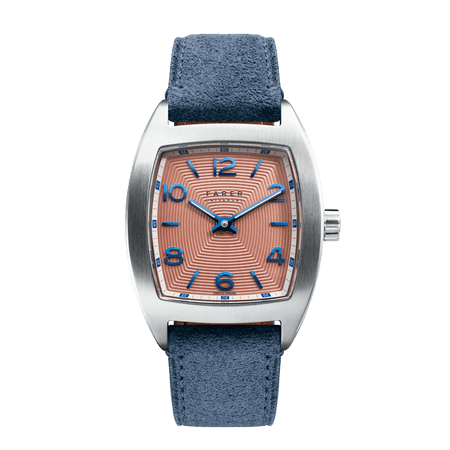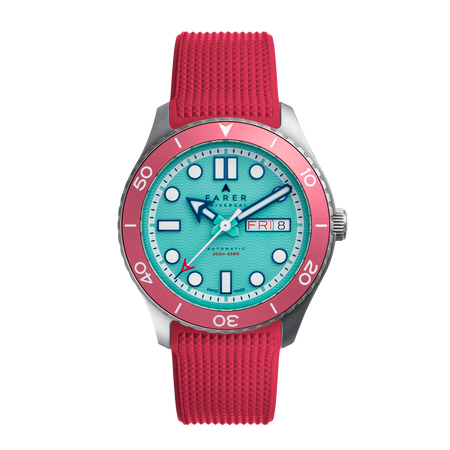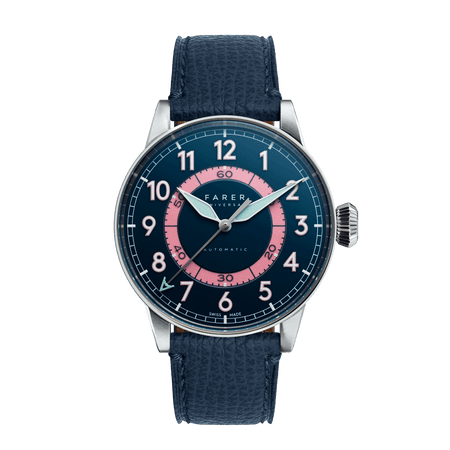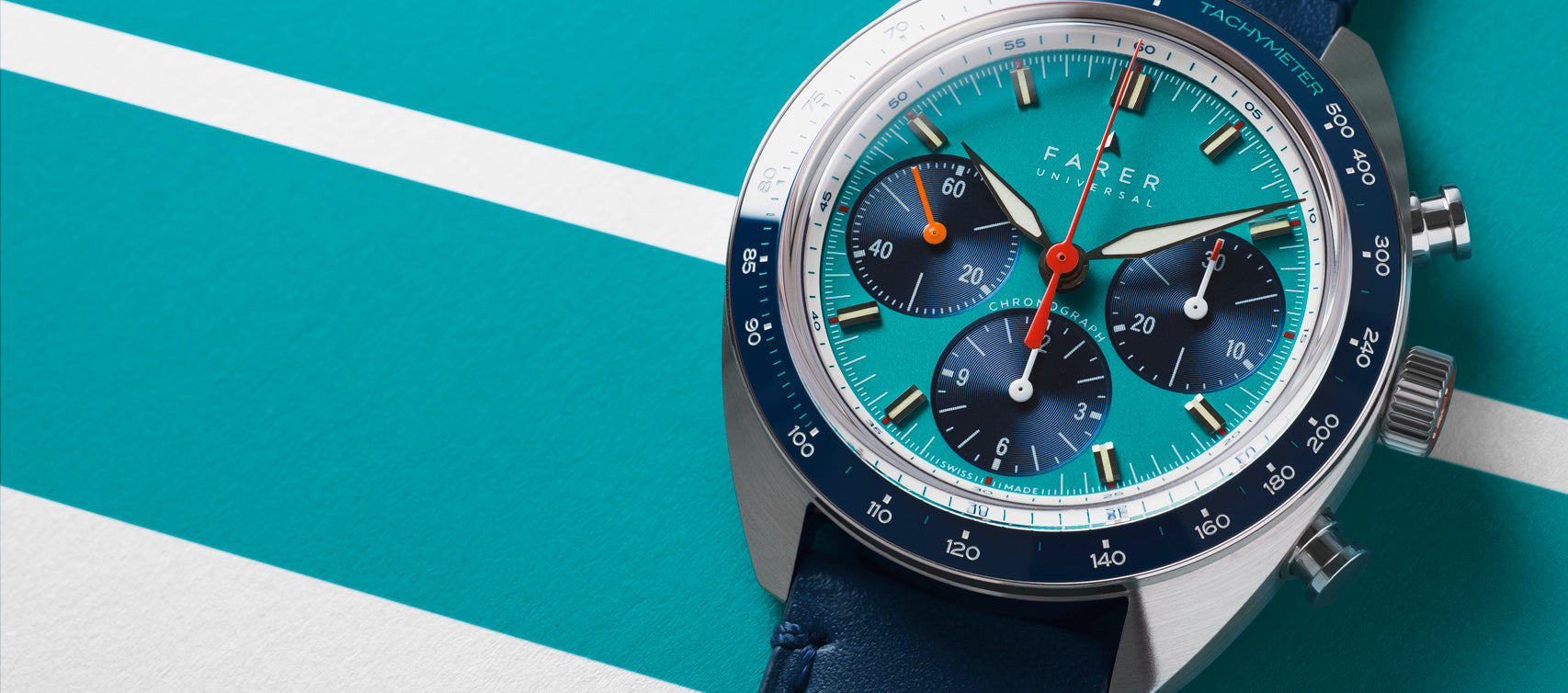Why you need a chronograph
Snick in the ‘start’ pusher on a Farer chronograph and you set in train a series of tiny levers, cams and spinning, meshing gears that will do everything from timing your breakfast egg to measuring a lap round Spa. A watch with a chronograph is probably the most useful complication you can have on your wrist.
It’s odd, though; why is it called a ‘chronograph’? After all, ‘chrono’ comes from the Greek for ‘time’ and ‘graph’ started its life as “graphein”, ‘to write’. The reason, like so much in watchmaking, is historical. The early chronographs, invented by French watchmaker Nicolas Rieussec around 1821, really did write the time. They were designed to measure the duration of horse races by putting an ink mark on a rotating brass dial as a horse started a race and another when it finished. Nowadays, it’s still about dials but hands do the hard work.
Rieussec’s chronograph wasn’t the sort of thing you’d lug about with you - it was about the size and weight of six iPhones stacked on top of each other. It took until 1913 for dedicated wrist chronographs to make an appearance with the Longines Calibre 13.33Z These were intended for doctors and designed for the relatively simple task of measuring your pulse. With the advent of WW1, wrist chronographs like the Longines were soon developed and adapted for military field use. 

We may only have just launched the our Farer Carnegie chronograph, but it has firm links to this watchmaking heritage. In fact, the mechanical Sellita SW510 movement that powers the Carnegie can trace its bloodline back to the venerable Valjoux 7750, the watch that allowed the Swiss to take on the bleepy quartz invaders of the early 1970s and win.
It’s a traditional chronograph layout on the dial, with a 30 minutes subdial at 3 o'clock, a 12 hours counter at 6 o'clock and running seconds at 3 o'clock. But the detailed design is anything but traditional. We wanted a chronograph that was easy to use and read, so each of the subdial hands is different; red-tipped white, plain white and orange. The steel-edged hour and minute hands stand out against the matte teal dial in daylight and, in low light conditions, the Super-LumiNova Grade A infil makes them just as easy to see.
Behind the dial, the Sellita SW510 is a mechanical, 28,800bph, 17 jewel engine with 58 hours of power. It’s the elaboré grade, so it’s adjusted in three positions and is accurate to +/-5 sec/day up to +/- 12 sec/day, although individual movements often beat this comfortably. We had Sellita make a bespoke high end bridge with our monogram engraved on it in a chequered sports pattern. The movement’s base plate is engine turned and we’ve finished with blued screws. You’ll find Sellita movements in watches costing a great deal more than the Carnegie’s £1,680.
The SW510 is a ‘cam and lever’ or ‘coulisse’ chronograph movement. When you click the start pusher, it moves a lever that, in turn, moves a cam shaped a bit like a heart. This starts, stops and resets the chronograph. We wanted a movement that was all about accuracy, ease of maintenance, reliability and affordability.

It’s a handwinder too. We like the daily ritual of hand-winding a watch (although you can easily leave your Carnegie over two days without fuss if you’re feeling lazy) and we’re fans of the slimmer case design it means we can utilise. That means just under 13mm deep including the box-cased sapphire crystal and a wrist-friendly diameter of 41mm. It’s 316L marine grade stainless steel too (including the pushers) and, thanks to the screw-tight caseback, fixed down with four screws, it’s water resistant to 10ATM.
Using it couldn’t be simpler. The cam and lever system means the pushers have a firm, mechanical feel to them. Depress the 2 o’clock pusher to start the chronograph and the centre red centre seconds chrono hand starts sweeping around the dial. Click the pusher at four o’clock to stop when you’re finished. There’s a real joy in setting a chronograph running, just to watch a small miracle of mechanics at work on your wrist.
